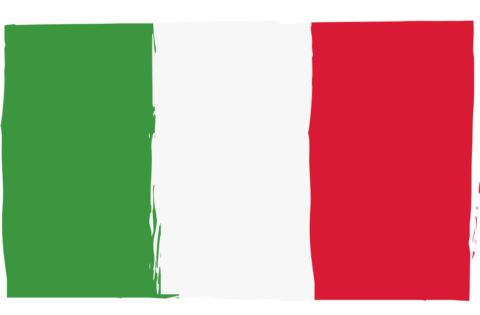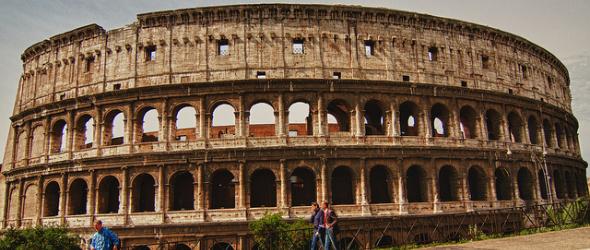Whilst chatting with one of my students, I discovered that he’d done his degree thesis on the subject of Italian television . I had to know more about this aspect of Italy I love to hate.
My student told me that when television was first launched in Italy, way back in 1954, Italian television had an objective. It was also good too. Oh how times have changed!
The Objective of Italian Television
This objective of 50s Italian TV in its hayday was to educate Italy’s population and overcome the communication difficulties posed by Italy’s myriad of often mutually unintelligible dialects. Such was the prevalence of dialects that many Italians literally could not understand each other. So much for Italy’s unification back in around 1871!
Back to Italian TV. From the 50s to around the end of the 70s programming was designed to both unify the country and overcome what some considered as being Italian ignorance. This aim was partially achieved in that few Italians now speak their local dialect and nothing else. Back in those halcyon days TV programming was intellectual and informative and powerful minds were involved in creating informative broadcasts. I have seen some old black and white RAI stuff, and it is very good. As for overcoming igorance, well, the court is still out on that one.
Italian Telly Addicts
My student, Mattia, told me that Italians watch an average of around 6 or 7 hours of TV a day. Yipes, I thought, so much for the sunny Italian weather! Indeed, the influence of Italian TV has been so powerful that Italians stopped bothering with things like books and newspapers, and instead relied on TV as their primary source of information. Many still do to this day, at least many of Italy’s older generations.
Today, Mattia told me, Italy’s young are forgoing the goggle box in favour of Internet and are using the TV as a means of watching films downloaded, not always legally, from the web.
Apparently Mattia had some real problems obtaining information about Italian television and the most up to date Italian documents he managed to unearth were archaic, dating back to 1958. Other information he gathered to support his thesis was as a result of locating and perusing English language texts.
Auditel – Lies Damned, Lies, and Statistics?
On the subject of information on Italian TV, an Italian audience monitoring body, which goes by the name of Auditel, is responsible for measuring viewing figures based on a meter distributed to around 5,000 Italian families which make up as total of 14,000 actual viewers. Whilst supposedly independent, Auditel has come under criticism for using a statistical methodology which may not accurately represent true viewer numbers. Somehow statistics are dolled up to show that the sample of 14,000 people can reflect the actual viewing habits of up to 15 million Italians.
Actually to be fair, Italy’s Auditel uses an audience sample which is around the same as the UK BARB. What would be interesting to know would be the calculations Auditel uses and to see of they are similar to those used by BARB and other organisations which perform the same function.
Examples such as Italy’s dire Island of the Famous come to mind. Although Auditel states that millions watch this awful offering, strangely, not many real people will actually admit to having seen it. This could be down to the inaccuracy of the Auditel system, or may simply be because Italians are too embarrassed to admit to watching the program (I saw it once, I admit, but – never, ever, again!). I can think of far more interesting alternatives, like pulling the fluff from my belly button, for example. Or watching a 24 hour slug racing marathon. Sorry, I digress.
Alas Auditel figures seem to be used by Italy’s TV channels to justify the continual showing of trashy ‘bums and breasts’ TV.

Stop reading, start speaking
Stop translating in your head and start speaking Italian for real with the only audio course that prompt you to speak.
Something is not quite right though, in that, and as mentioned before, Italy’s youth are turning away from tacky TV variety and quiz shows to devote more time to the world wide web, thankfully. And as I’ve observed elsewhere on Blog from Italy, Italian TV tends to consist of advertisements interspersed with the odd program or two.
As a matter of fact, showing too many ads has got both Italy’s public RAI and Berlusconi’s Mediset TV channels into some legal bother. Not that anything seems to have changed since I first wrote about about this issue back in 2005. Suffering though 10 minute commercial breaks continues.
The Decline of Italian TV
As to when the rot in Italian TV set in, well it was probably around the early to mid-1980s, when Berlusco’s channels exploited a favourable law which was assisted through Italy’s parliament by Berlusconi’s political chum and arch Italian fiddler ‘socialist’ Bettino Craxi. This law was referred to appropriately enough as the ‘Decreto Berlusconi’ – the Berlusconi Decree. Berlusconi’s very own decree became law at the start of 1985. It allowed Silvio to broadcast nationally and to start to show the kind of ‘bums and breasts’ programming which continues today.
One imagines that prior to the emergence of Berluscovision, RAI had simply become too heavyweight and had not bothered to try and entertain Italian TV viewers, which was why the Berlusconi approach with its glamorous showgirls and their skimpy clothes took Italian living rooms by storm.
RAI answered the Berluscovision challenge by dumbing down its own programming in an attempt reconquer lost share and the resulting battle has led to the generally shoddy quality of Italian TV today. Only Italy’s RAI 3 channel has managed to maintain a little intelivision, but even this channel has succumbed to the soaps. And Berlusco has been heard to utter that RAI 3 is a commie channel, so it’s days are probably numbered.
RAI 1 and 2 – Untainted News?
Interestingly, those who are not ardent Berlusco fans tend to believe that the RAI 1 and 2 news programs are more reliable and less tainted sources of news, even if the two prime time RAI news programs are virtually indistinguishable as far as content goes. Watching the news on RAI 2 at 8.30 straight after the 8.00pm news on RAI is akin to watching a repeat. It is also obvious that the same camera crews are used to produce items for both channels’ flagship news programs. Some funny economies of scale at work.
Political Manipulation and Censorship
Actually as I write there is a political battle going on for control of the Italian RAI’s state TV’s governing body. The nominee belongs to Di Pietro’s Italian Values party which is distinctly unfriendly towards Berlusconi – who is not happy about losing control of part Italy’s TV media.
Italian politicians have been using TV channels to bolster their positions via covert propaganda for some time now. If you have ever had the misfortune to have seen one Emilio Fede in action, you will know exactly where this anchor man’s political allegiances lie. Indeed, he is so blatantly supportive of Mr Berlusconi during his TV news broadcasts, that many here regard the Rete 4 news program as being something of a (bad) joke.
That Berlusco is a little worried about losing his grip on RAI, is evidenced by his recent suggestion that to counter the image tarnishing effects of such an occurrence, he wants to introduce legislation to stop TV programs which ‘insult’ Italy’s politicians, well, those which insult he and his chums. Here comes Belusconi Decree Mark 2! Censorship anyone?
Like most things in Italy, it is probably true to say that Italian TV is heavily manipulated by many interests. And when it is not being tweaked, it’s showing dross like ‘L’Isola Dei Famosi’, for which certain ‘stars’ are paid handsomely.
Those who regard Italians as paragons of good taste should watch some Italian TV. It might just change their opinions. I know for a fact that in addition to many Italians, quite a few expats, including Americans, Brits and Germans, find Italian TV pretty appauling.


